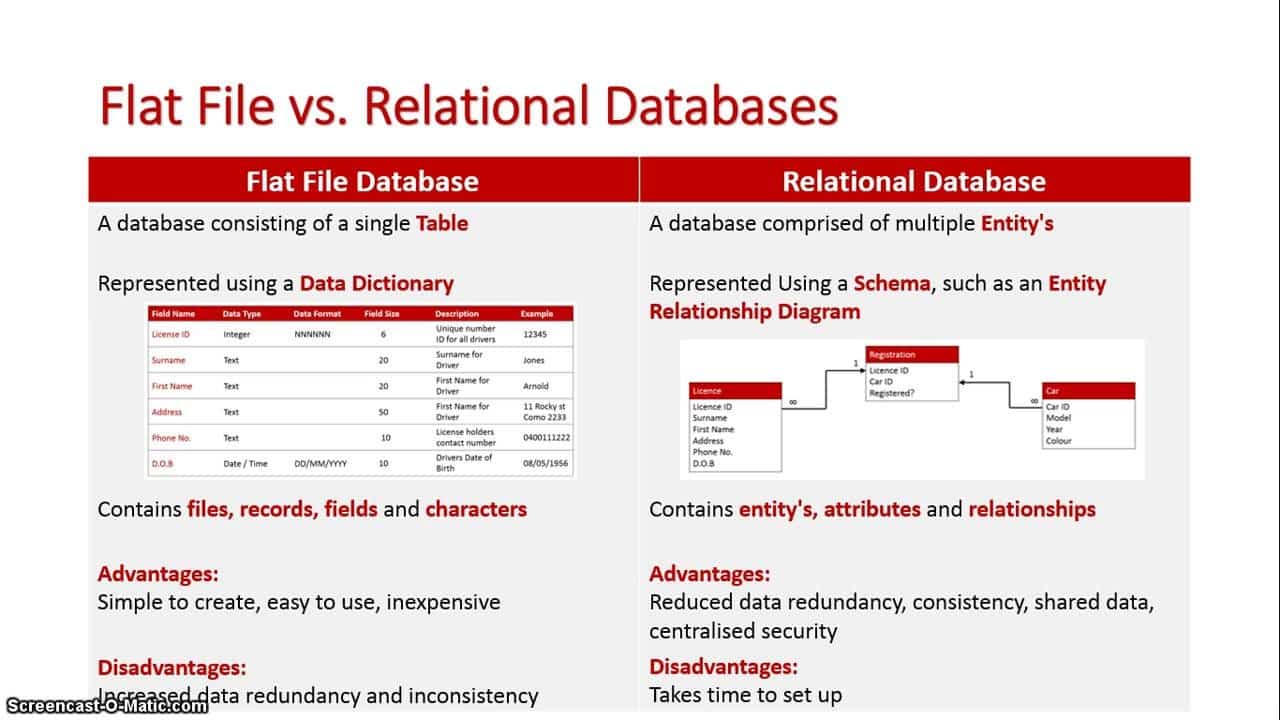A flat file database is an arrangement of data in which all information is contained in a single, unstructured file called a flat file. Flat file databases are generally simpler to use than other types of databases, such as relational databases, and can be manipulated easily. They are commonly used for basic storage of small amounts of data, such as user preferences or settings.
Flat file databases provide several advantages over other types of databases. They are relatively easy to set up and maintain, and require minimal technical knowledge, making them a cost-effective choice for businesses with limited resources. Additionally, flat file databases can be easily shared between applications and users, and manipulated using scripting languages such as JavaScript.
However, flat file databases also have several drawbacks. They are limited in terms of the size and complexity of data they can store. Additionally, there is a lack of control over data, meaning it is difficult to control who is accessing or modifying data. Additionally, flat file databases lack the functionality of relational databases, such as views, stored procedures, and triggers.
In conclusion, flat file databases have a number of advantages and disadvantages. They are relatively simple to set up and maintain, but are limited in terms of the complexity of data they can store. As such, they are suitable for basic file storage of small amounts of data, but those requiring more advanced features should look at other types of databases.






